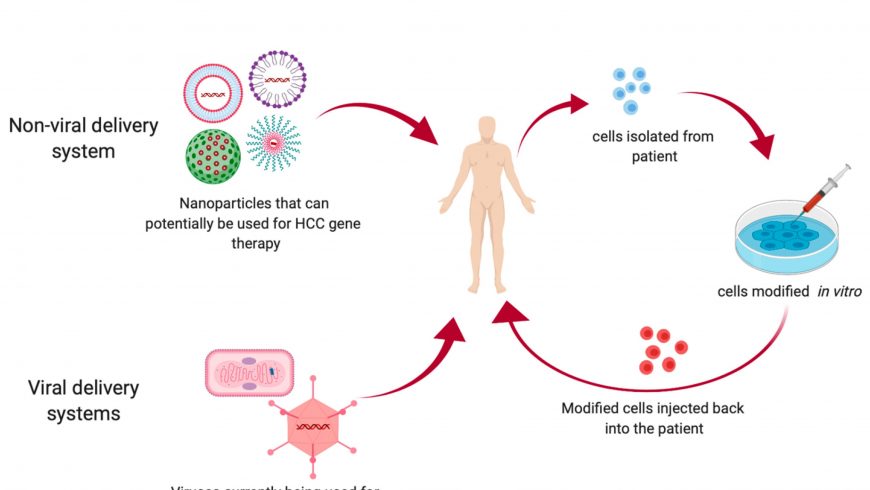Gene Therapy: A Potential Cure for Type I Diabetes Mellitus
Ishan Bordoloi1 and Ujjal Das2
1 & 2UG 3rd year, College of Veterinary Science, Assam Agricultural University, Guwahati-781022
Corresponding author’s email: ujjaldas8112@gmail.com
Introduction:
Diabetes mellitus is a chronic metabolic disorder caused by high levels of glucose in blood. Based on the physiological etiology, it is divided into two types:
- Type I Diabetes mellitus, where destruction of the β-cells takes place due to autoimmune reaction.
- Type II Diabetes mellitus, where the β-cells cannot secrete insulin as per body requirement.
Diabetes is one of the most common metabolic disorders in the world. Around 422 million people in the world have diabetes including both the types [1]. In India, there are about 77 million people having diabetes, with an increase of 3-5% of type I diabetes mellitus every year, as reported in 2015 [2]. Over 100,000 children in India are known to be living with type I diabetes. In 2004, Bhatia et al. reported that out of 160 patients, 81% had type I diabetes before the age of 18 [3]. There is presently no cure for both the types of diabetes mellitus. It can only be controlled by lifestyle modifications and by taking regular doses of insulin, if applicable.
Gene therapy:
Gene therapy is a technique used to deliver or manipulate genetic material inside a cell for treatment of a disease with genetic etiology. The main three steps include – introduction of a new gene into the body, replacement of the faulty genes with functional ones and inactivating/ activating the genes causing the disease [4].
Based on the cells that are being treated, gene therapy is of two types:
- Somatic gene therapy, where a segment of DNA is transferred to any non-reproductive cells; and
- Germ line gene therapy, where a segment of DNA is transferred to reproductive cells, which prevents spread of the disease to future generations [5].
Gene augmentation therapy, gene inhibition therapy and killing of specific cells are some of the techniques which are currently used in gene therapy.
The common vectors used for gene delivery in gene therapy are [6]:
- Adenovirus: It is a medium-sized (90-100 mm), non-enveloped virus with dsDNA belonging to the Adenoviridae
- Retrovirus: This is one of the common viral vectors used in gene delivery systems. It contains two copies of ssRNA for proteins.
- Epstein-Barr virus: It is a Herpesvirus having a large dsDNA and the ability to synchronize with host chromosomes by using host’s replication apparatus.
- Lentivirus: This viral vector has the ability to infect both dividing and non-dividing cells. It has low immunogenicity and long duration of gene expression.
- Electroporation: It is the method of using electric fields to induce gene transfer.
- Plasmid: It is a small, circular, extra-chromosomal DNA present outside the nucleus in prokaryotes like bacteria.
Gene therapy’s approach towards type I diabetes mellitus:
As type 1 diabetes mellitus is mainly an autoimmune disease involving the destruction of pancreatic β-cells, the goal for gene therapy here should be preventing the autoimmune reactions that causes β-cell destruction. The prerequisite for gene therapy to be used for type I diabetic patients is that it should result in a minimum morbidity for the patient than the disease itself.
The first recorded gene therapy for diabetes aimed at converting non-insulin producing cells to insulin producing β-cells by using a suitable insulin gene construct. Hepatocytes, myocytes and exocrine cells have been successfully converted into such artificial cells that can produce insulin. Unfortunately, those cells could not respond to the normal physiological presence of glucose [7]. However, with the advancements in biomedical technologies, diverse gene therapy approaches are now being experimented and used. The most common among them are [8]:
- Genetic modification of β-cells or immune cells: This approach has its own constraints like the possible risk of unwanted systemic immune reactions that occur with the genetic modification of the immune cells.
- Genetic modification of cells of the pancreatic Islets of Langerhans to produce molecules that can suppress the local immune response: Modification of the β-cells leading to inhibition of MHC (Major histocompatibility complex) processing is another potential approach for gene therapy.
- Islet β-cell and pancreas replacement method: This method also has the potential to be applicable for gene therapy of type II diabetes mellitus.
Adenoviral vectors are used as the preferred gene delivery method among viral vectors. Among the non-viral gene delivery systems, chemical vectors like cationic lipids and polymers have shown good results in experimental studies [9]. However, the search for more efficient and stable vectors still continues.
Conclusion:
As mentioned earlier, till date there is no definitive cure for type I diabetes. But gene therapy promises to be one of the most potent treatments for this most common autoimmune disorder. There are studies in which gene therapy has successfully demonstrated the prevention and even reversal of type I diabetes in laboratory mice. However, the human subject’s physiology in reality can be a tough and tricky one when it comes to expression of the same results in human as found in mice. Nonetheless, gene therapy holds the possibility of providing closest to a permanent cure for type I diabetes mellitus in future.
References:
- https://www.who.int/health-topics/diabetes#tab=tab_1
- https://www.healthline.com/health/diabetes/diabetes-in-india#prevalence
- Bhatia, V., Arya, V., Dabadghao, P., Balasubramanian, K., Sharma, K., Verghese, N. and Bhatia, E. (2004). Etiology and outcome of childhood and adolescent diabetes mellitus in North India. Journal of Pediatric Endocrinology and Metabolism, 17(7): 993-1000.
- Mali, S. (2013). Delivery systems for gene therapy. Indian Journal of Human Genetics, 19(1):
- Kaufmann, K.B., Büning, H., Galy, A., Schambach, A. and Grez, M. (2013). Gene therapy on the move. EMBO Molecular Medicine, 5(11): 1642-1661.
- Chellappan, D.K., Sivam, N.S., Teoh, K.X., Leong, W.P., Fui, T.Z., Chooi, K., Khoo, N., Yi, F.J., Chellian, J., Cheng, L.L. and Dahiya, R. (2018). Gene therapy and type 1 diabetes mellitus. Biomedicine & Pharmacotherapy, 108: 1188-1200.
- Welsh, N. (2000). Prospects for gene therapy of diabetes mellitus. Gene Therapy, 7(3): 181-182.
- Levine, F. and Leibowitz, G. (1999). Towards gene therapy of diabetes mellitus. Molecular Medicine Today, 5(4): 165-171.
- Shrestha, N., Araújo, F., Sarmento, B., Hirvonen, J. and Santos, H.A. (2014). Gene-based therapy for Type 1 diabetes mellitus: viral and non-viral vectors. Diabetes Management, 4(4):




